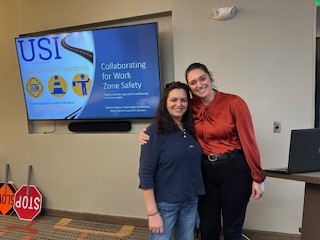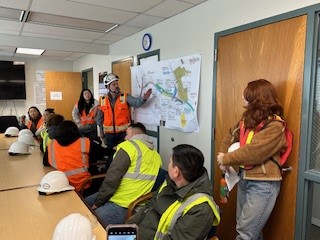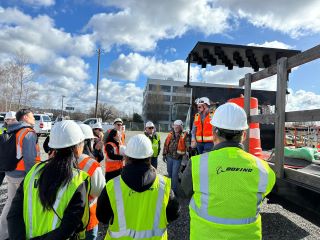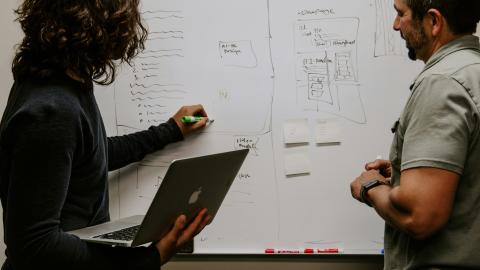
April 5, 2024

The Occupational Health and Safety Continuing Education Programs hosted 23 professionals from Mongolia for a special 4-day Road Construction Safety Training in early March. Robin Smith, Interwest Construction LLC and Mallorie Davies, WA & Northern Idaho District Council of Laborers provided these professionals resources and training on best practices for making work zones safer. In addition, Rocco Meraglia, Cashman Global (HSE & Security) Management LLC, discussed how to conduct incident investigations that focus on identifying root causes to prevent injuries and illnesses on job sites. Phil Larson and Brian Van at Atkinson Construction hosted a site visit where our visitors observed attenuator trucks, barricades, heavy machinery, and safe work zones involved in road construction. This event marks the third year collaborating with Bolormaa Tserendash, at the Evergreen Human Resource Institute, who has experience coordinating training for Mongolian workers in the United States along with Tserernpurev Batdelger, Federation of Mongolian Road Workers Trade Unions. Grace Price, an NWCOHS Industrial Hygiene trainee, participated in the site visit and wrote a self-reflection on her experience.

NWCOHS trainee reflects on participating in the site visit
I was lucky to attend the site visit with the visiting delegation of policymakers, union representatives, and construction professionals from Mongolia. As a group, we heard insights into pre-activity planning, near-miss reporting, and maintaining worker safety on large-scale road construction projects from the safety managers at Atkinson Construction. We also toured the equipment lot to get a closer look at the cones and arrow boards used to direct traffic through a construction zone, and the TMAs (truck-mounted attenuators) that provide a crash cushion to protect workers from vehicle collisions. Our group also got to visit an overpass construction site in Fife, Washington, where workers were laying rebar and preparing the concrete bed for a road that will eventually connect the Port of Tacoma directly to the warehousing district, circumventing the downtown and residential streets that are currently being used to transport goods.

Unique road construction safety concerns
As an Occupational Hygiene student and NWCOHS trainee, this was an especially interesting site visit for me. I have visited many different types of workplaces where the primary concerns are elements such as machine guarding or hazardous chemicals that must be controlled to maintain worker safety. At the construction site, some of the biggest threats to worker wellbeing are distracted drivers passing by. This requires a different, more adaptable approach to protecting workers on the job. Workers and safety managers must be vigilant and prepared for ever-changing weather and traffic conditions to stay safe while completing crucial infrastructure projects. While outside elements, such as passing cars, cannot be controlled to the same degree as more predictable hazards, it is clear that the road construction industry has made major technological advances in safety since the original construction of the interstate system. While there was not a dedicated safety professional at the site we visited, our guides informed us that every worker on site is highly trained in safety, and it is a communal effort to ensure a safe worksite.

International knowledge sharing
In conversation with the representatives from Mongolia, it was fascinating to learn there are only two major modern roads that cross their country. The remainder of car travel requires driving through unpaved grasslands. It is exciting that Mongolia is preparing to expand its road infrastructure connecting remote regions to urbanized areas, and inspiring that the construction leaders are taking the time to learn about established safety measures developed over the last several decades by the US construction industry. Talking with the delegates opened my mind to the unique perspectives and challenges faced by workers and safety professionals in countries that are rapidly urbanizing. I will take this experience with me into my professional career. The longstanding partnership between the Mongolian representatives and the Northwest Center demonstrates worker wellbeing and safety as an increasingly paramount consideration across cultures. I learned a lot from my participation!
Cover image: iSTock, Daniel Avram.




